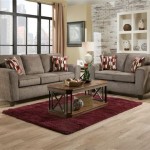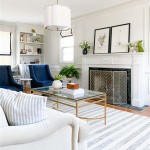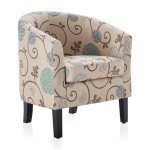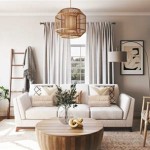Wall Storage Solutions for the Modern Living Room
The living room, often considered the heart of the home, serves multiple purposes. It functions as a space for relaxation, entertainment, and social gatherings. Consequently, it tends to accumulate a variety of items, from books and media equipment to decorative objects and children's toys. Effective storage solutions are therefore crucial for maintaining a clutter-free and aesthetically pleasing living room environment. Wall storage offers a versatile and space-saving approach to organizing belongings while simultaneously contributing to the room's overall design.
Wall storage encompasses a wide array of options, ranging from simple shelves and floating cabinets to elaborate modular systems and custom-built units. The selection of appropriate wall storage solutions depends on factors such as the size and layout of the living room, the amount and type of items to be stored, and the desired aesthetic. Consideration must also be given to the structural integrity of the wall itself to ensure that it can safely support the weight of the chosen storage system and its contents. This article explores the benefits, types, and implementation of wall storage solutions for maximizing space and enhancing the organization of the living room.
Maximizing Space and Verticality
One of the primary advantages of wall storage is its ability to utilize vertical space effectively. In smaller living rooms, floor space is often at a premium. Traditional floor-standing cabinets and shelving units can consume valuable square footage, making the room feel cramped and cluttered. Wall-mounted storage, on the other hand, frees up floor space, creating a more open and spacious feel. By extending storage upwards, it allows for the organization of belongings without sacrificing valuable floor area. This is particularly beneficial in apartments or homes with limited living room space.
By leveraging the height of the walls, wall storage systems can significantly increase the overall storage capacity of the living room. Items that might otherwise be scattered on tables, shelves, or the floor can be neatly organized and displayed on wall-mounted shelves or within cabinets. This helps to minimize visual clutter and create a more streamlined and organized appearance. Moreover, the vertical placement of storage can draw the eye upwards, making the room feel taller and more expansive.
Strategic placement is key to maximizing the impact of wall storage. Consider utilizing wall space above furniture, such as sofas or entertainment centers, to create integrated storage solutions. Floating shelves can be positioned above a television to provide space for media equipment, decorative objects, or books. Combining wall storage with other space-saving strategies, such as using multi-functional furniture, can further optimize the use of limited space.
Types of Wall Storage Solutions
The market offers a diverse range of wall storage options to suit varying needs and preferences. Each type possesses its own unique characteristics in terms of aesthetics, functionality, and installation requirements.
Shelving Units: Shelving units are among the most common and versatile wall storage solutions. They can be configured in various shapes, sizes, and materials, allowing for a high degree of customization. Open shelving provides easy access to stored items and allows for the display of decorative objects, books, and artwork. Closed shelving, such as cabinets with doors, offers concealed storage for items that are best kept out of sight. Floating shelves, which appear to be suspended from the wall without visible supports, create a minimalist and contemporary aesthetic. Shelving units can be installed as individual shelves or as part of a larger modular system.
Cabinets: Wall-mounted cabinets provide enclosed storage, offering a more discreet and organized appearance. They are ideal for storing items that need to be protected from dust or kept out of reach of children. Cabinets can be designed with doors, drawers, or a combination of both, allowing for different types of storage. Glass-fronted cabinets offer a compromise between open and closed storage, allowing for the display of cherished items while still providing a degree of protection. Wall cabinets are available in a variety of styles, from traditional to modern, to complement the existing décor of the living room.
Modular Systems: Modular wall storage systems offer a flexible and customizable approach to organizing the living room. These systems consist of individual components, such as shelves, cabinets, drawers, and desks, that can be combined and reconfigured to meet changing needs. Modular systems allow for the creation of personalized storage solutions that are tailored to the specific requirements of the living room. They are particularly well-suited for accommodating a variety of items, from media equipment and books to toys and games. The modular nature of these systems allows for easy expansion or modification as storage needs evolve over time.
Wall-Mounted Entertainment Centers: In living rooms where the television is a focal point, a wall-mounted entertainment center can provide a comprehensive storage solution for media equipment, DVDs, and other related items. These centers typically consist of a combination of shelves, cabinets, and drawers, designed to accommodate a variety of electronic devices and accessories. Wall-mounted entertainment centers help to keep cables and wires neatly organized, creating a cleaner and more streamlined appearance. They can also incorporate features such as adjustable shelves, media storage compartments, and integrated lighting.
Custom Built-Ins: For a truly personalized storage solution, custom-built wall units offer the ultimate in flexibility and design integration. Built-in units are designed and constructed specifically for the living room, taking into account the room's dimensions, architectural features, and the homeowner's individual storage needs. Custom built-ins can seamlessly integrate with the existing décor, creating a cohesive and unified look. They can incorporate a variety of storage elements, such as shelves, cabinets, drawers, and desks, and can be tailored to accommodate specific items or collections. While custom built-ins typically require a higher initial investment, they offer a long-term storage solution that is perfectly suited to the living room.
Installation and Considerations
Proper installation is crucial to ensure the safety and stability of wall storage systems. The type of wall construction, the weight of the storage unit and its contents, and the type of mounting hardware used all play a significant role in the installation process. It is essential to follow the manufacturer's instructions carefully and to use appropriate hardware for the specific type of wall.
Wall Type: The most common types of walls in residential construction are drywall, plaster, and masonry. Drywall, also known as sheetrock, is relatively easy to work with but has limited weight-bearing capacity. Plaster walls are generally stronger than drywall but can be more challenging to drill into. Masonry walls, such as brick or concrete, are the strongest but require specialized drilling equipment and hardware. When installing wall storage on drywall, it is essential to locate and anchor to wall studs whenever possible. Wall studs provide solid support and prevent the storage unit from pulling away from the wall. If studs are not accessible, drywall anchors can be used to distribute the weight of the storage unit more evenly. For plaster walls, it is important to use screws that are long enough to penetrate through the plaster and into the underlying lath or studs. Masonry walls require the use of masonry drill bits and anchors designed for concrete or brick.
Weight Capacity: It is crucial to consider the weight capacity of the wall storage system and the wall itself. Exceeding the weight capacity can lead to structural damage or even collapse. The manufacturer's specifications will typically indicate the maximum weight that the storage unit can support. It is important to factor in the weight of the storage unit itself, as well as the weight of all the items that will be stored on or within it. When in doubt, it is always better to err on the side of caution and choose a storage system with a higher weight capacity. It is also important to distribute the weight evenly across the shelves or compartments to prevent overloading any particular area.
Mounting Hardware: The type of mounting hardware used will depend on the type of wall and the weight of the storage unit. Common types of mounting hardware include screws, bolts, anchors, and brackets. Screws are suitable for attaching storage units to wall studs. Bolts provide a stronger connection and are often used for heavier items. Anchors are used to secure storage units to drywall or plaster when studs are not accessible. Brackets provide additional support and are often used for shelving units or cabinets. It is important to use high-quality mounting hardware that is specifically designed for the intended purpose. The hardware should be made of durable materials, such as steel or brass, and should be appropriately sized for the storage unit and the wall.
Professional Installation: For complex installations or when unsure of one's ability, professional installation is highly recommended. A professional installer will have the necessary tools and experience to ensure that the wall storage system is installed safely and securely. They can also provide advice on the best type of storage system for the living room and help to optimize its placement. While professional installation may incur an additional cost, it can provide peace of mind and prevent potential problems down the line.

20 Genius Living Room Storage Ideas Declutter And Impress

Design Your Own Modular Wall Storage Units The Dormy House

Modern Living Room Wall Units With Storage Inspiration

10 Times Built In Storage Transformed A Living Room Houzz Ie

Best Living Room Storage System Wall Unit

Design Your Own Modular Wall Storage Units The Dormy House

Best Living Room Storage System Wall Unit

Scandinavian Living Room With Feature Wall And Storage Cabinets Hometrust

Living Room Storage Ideas For A Clutter Free Space Luxdeco
Living Room Storage Ideas Rb Twelve








